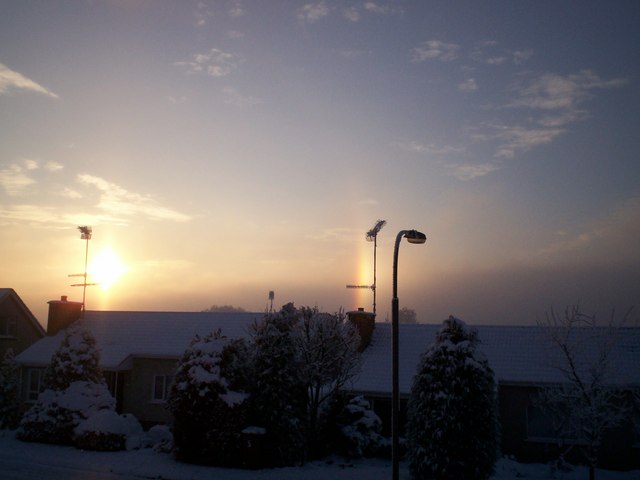Winter Sundog
Introduction
The photograph on this page of Winter Sundog by P Flannagan as part of the Geograph project.
The Geograph project started in 2005 with the aim of publishing, organising and preserving representative images for every square kilometre of Great Britain, Ireland and the Isle of Man.
There are currently over 7.5m images from over 14,400 individuals and you can help contribute to the project by visiting https://www.geograph.org.uk

Image: © P Flannagan Taken: 21 Dec 2010
Taken at 3.15pm when the sun was going down on the shortest day of the year. A sun dog or sundog (scientific name parhelion, plural parhelia, from Greek parēlion, "beside the sun"; also called a mock sun) is an atmospheric phenomenon that creates bright spots of light in the sky, often on a luminous ring or halo on either side of the sun. Sundogs may appear as a coloured patch of light to the left or right of the sun, 22° distant and at the same distance above the horizon as the sun, and in ice halos. They can be seen anywhere in the world during any season, but they are not always obvious or bright. Sundogs are best seen and are most conspicuous when the sun is low. A few minutes later the fog came down over the River Bann valley. Today, the lunar eclipse coincided with the winter solstice over Britain for the first time in 372 years. Some people got a good view in N. Ireland between 6am and 7am this morning in places where there was no fog.

